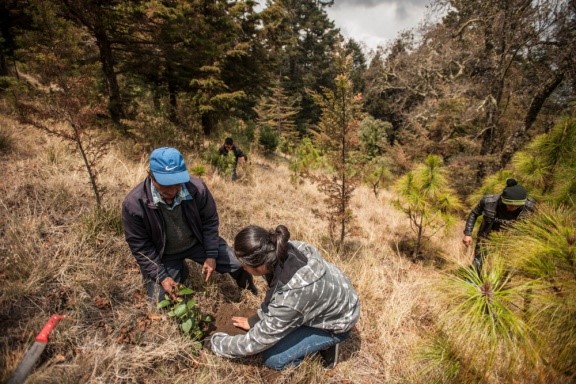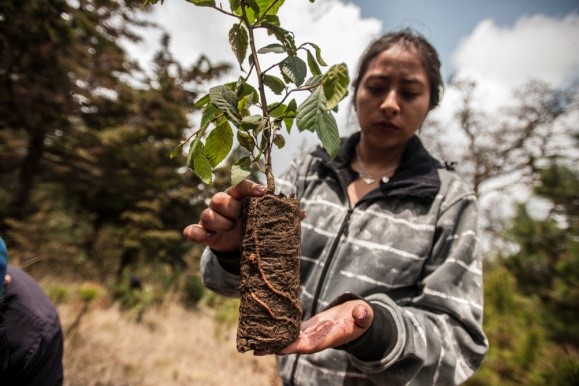Implementation of scalable EbA measures to increase forest cover and water availability
Reforestation in water recharge zones, Esquichá Microbasin
IUCN @ Paul Aragón
Reforestation in water recharge zones, Esquichá Microbasin
IUCN @ Paul Aragón
Based on the vulnerability analysis and by common agreement, the communities prioritized several EbA measures in order to increase their resilience:
- Protection and restoration of water recharge zones. Includes reforestation on municipal or communal lands with water sources; protection of community pine forests where the largest areas of natural forests (Abies guatemalensis) in good condition are found; reparation of communal forests affected by pests; and reforestation of areas without trees adjacent to natural forests. For these actions that improve connectivity and forest cover, access to forest incentives is also promoted.
- Establishment (1) and strengthening (15) of community forestry nurseries, to support reforestation actions.
- Agro-forestry systems and good practices: Productive systems on 16 farms are optimized and diversified, incorporating timber and fruit trees to improve soil conservation, productivity and food security.
- Recovery of lands affected by landslides: Agroforestry systems as well as access to forest incentives for the recovery of areas damaged by storms are promoted.
The communities of the microbasin embraced these measures and support their implementation with important technical resources.
- The Tacaná Municipal Council gave support to communities for access to forest incentives.
- IUCN had 10 years of experience in the territory and local technicians.
- There is excellent community leadership, which increases their willingness to dialogue, learning and the search for solutions.
- There is an awareness of climate change, since extreme events in previous years have affected several communities, damaging both their assets (crops, housing, productive infrastructure) and the water resource.
- Key factors for the implementation of EbA measures were: a strong organizational base, community agreements, social participation and leadership from local authorities (both indigenous and municipal).
- To ensure that EbA was able to demonstrate an initial impact in communities and in this way, create confidence in the adopted strategy, the first step was to promote reforestation in the upper parts of the micro-basin (water source areas) or in areas affected by landslides, as well as community work around forestry nurseries. These actions helped to consolidate the concept that forest cover is "an insurance" in the face of climate change.
- Valuing the ecosystem services of the basin helped to see adaptation as a task for all communities, in order to obtain benefits for both the Esquichá micro-basin and for other communities located further down in the Coatán River basin.


